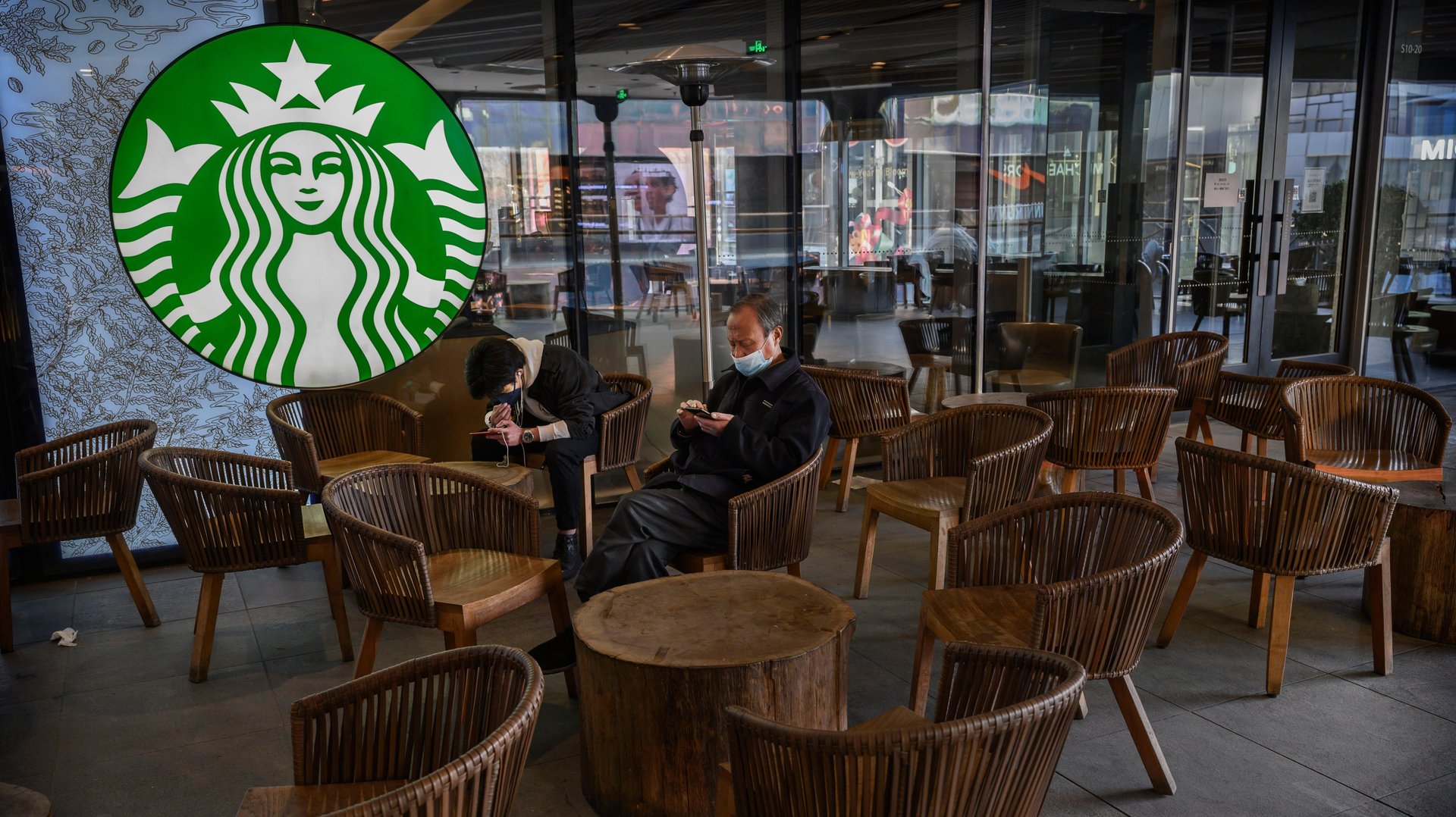Apple and Starbucks couldn’t rise above China’s zero-covid policy
iPhone supply and demand were both impaired in China, as were purchases in Starbucks stores

The impact of Beijing’s zero-covid policy on US companies has become clear this earnings season.
When Apple and Starbucks reported earnings yesterday (Feb. 2), they cited both supply chain woes and strapped demand in China for each of their somber quarters.
Covid-19-related challenges “significantly impacted the supply of iPhone 14 Pro and iPhone 14 Pro Max, and lasted through most of December,” causing ship times to stretch, Apple CEO Tim Cook said on the earnings call, but he assured that “we’re now at a point where production is what we need it to be. And so the problem is behind us.”
Meanwhile, Starbucks CEO Howard Schulz said “covid-related headwinds that unfolded in China,” such as suppressed mobility in the region, had a big hand in its poor performance. The nearly 30% drop in China sales dragged the entire international segment down by 13%.
Charted: China’s impact on Starbucks, by the digits
Apple’s earnings, by the digits
$117.2 billion: Apple’s revenue for the quarter ended Dec. 31, 2022
5%: Drop in Apple’s quarterly revenue year-over-year. Besides, covid related issues, foreign exchange headwinds and other macroeconomic challenges such as inflation and Russia’s war in Ukraine weighed heavily
$65.8 billion: iPhone for the quarter, down 8% year over year
$9.4 billion: iPad revenue, up 30%. The massive jump was relative to a more somber December quarter a year ago, when Apple experienced significant supply constraints
$20.8 billion: All-time record revenue for Apple’s Services business for the quarter ended Dec. 31, 2022
$34 billion: Apple’s operating cash flow
$25 billion: How much Apple returned to shareholders during the quarter while continuing to invest in our long-term growth plans,” according to CFO Luca Maestri
2 billion: Installed base for Apple’s devices. The installed base is “the engine for services growth,” Maestri says. “And the fact that the installed base is growing very nicely, and it’s growing in a lot of emerging markets, it’s growing even faster, that gives us a larger addressable pool of customers.”
Quotable: iPhone demand will recover in China
“When you look at the opening that started happening in December, we saw a marked change in traffic in our stores as compared to November. And that followed through to demand as well. And I don’t want to get into January…But we did see a marked change from December compared to November.” —Apple CEO Tim Cook
Will Apple and Starbucks reduce dependence on China?
Apple’s Cook said the company builds its products “everywhere” adding that “component parts coming from many different countries in the world, and the final assembly coming from three countries in the world on just iPhone.” It is indeed trying to shift some manufacturing to India and Vietnam, but China, the world’s largest factory, still does the bulk of the work. The relaxation of China’s zero-covid policy is good news for Apple.
Unlike the Cupertino company, Starbucks isn’t benefiting massively from the reopening. Despite the rule relaxations, fewer people are picking up Starbucks coffees at stores due to widespread covid outbreaks. The Seattle-based coffee chain does not have “clear line of sight into the timing of recovery” and believes sales will continue to decline through this quarter, chief financial officer Rachel Ruggeri said on the earnings call. Recovery is only expected in the back half of fiscal 2023.
But there are some glimpses of hope already. For instance, in January, China’s comparable sales growth was a decline of approximately 15%, a significant improvement from a decline of 42% in December.
For Starbucks, which opened its first Beijing store in 1999, China is a key market outside North America and it has made great efforts to woo the nation: It has tweaked its food menu to offer products that cater to local traditions and tastes. The company owns every store in the country. (By contrast, it owns only 59% of its US stores.) And its ambitious plan for China store openings—9,000 stores in 300 cities by 2025, focussed on smaller cities—still “remains unchanged,” according to Ruggeri.
Related stories
🇮🇳 Apple’s $2.5 billion iPhone shipments from India hint at a major manufacturing shift